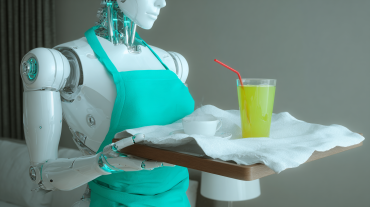

Humanoid robot companies attract billions in funding as manufacturers rush to deploy autonomous workers across global industries
Three Key Facts
- $114 billion market projection by 2033 – The humanoid robot market surges from $2.4 billion in 2023 with over 40% compound annual growth rate driven by manufacturing and logistics deployment.
- Figure AI achieves $2.6 billion valuation – The company secured Series C funding and partnerships with BMW to deploy 100,000 robots over four years from its 12,000-unit annual production facility.
- Tesla targets 100,000 Optimus robots by 2026 – Mass production ramp follows several thousand units planned for 2025, leveraging the company’s $1.24 trillion market cap and self-driving AI technology.
Introduction
The humanoid robot industry shifts from science fiction to commercial reality as private companies accelerate development beyond Tesla’s high-profile Optimus program. Nine key firms are deploying autonomous humanoids across manufacturing, logistics, and consumer markets this year.
These companies represent a collective push toward mass automation addressing labor shortages in critical industries. According to Investing.com, UBS analysts emphasize monitoring these private enterprises to gauge the true potential of humanoid automation across sectors.
The competitive landscape extends far beyond Tesla’s robotics ambitions. Private firms are securing substantial funding rounds, establishing manufacturing partnerships, and beginning commercial deployments that could reshape labor economics within the next two years.
Key Developments
Figure AI leads the private sector surge with its $39.5 billion valuation following Series C funding this year. The company operates a BotQ facility capable of producing 12,000 robots annually and maintains partnerships with BMW for large-scale industrial deployment.
Agility Robotics advances logistics automation through its Digit robots, addressing over one million unfilled material handling positions across the United States. The company collaborates with GXO Logistics and Tompkins Solutions while receiving minority investment from Schaeffler to expand operations.
Collaborative Robotics introduces its Proxie system, which has accumulated over 5,000 operational hours since 2024. These AI-driven robots work alongside human teams in warehouses and hospitals, featuring voice recognition and large language model integration.
1X Technologies prepares for large-scale consumer distribution of its Neo humanoid throughout the United States by 2025. The company acquired Kind Humanoid and secured backing from EQT Ventures to mass-produce domestic-use robots emphasizing biological safety protocols.
Market Impact
The humanoid robotics sector demonstrates explosive growth trajectory with market projections reaching $5 trillion globally by 2050. Current year-on-year growth exceeds 50% through 2025, driven by venture capital investment increases and patent filing acceleration.
Bipedal robot segments show the strongest expansion with compound annual growth rates surpassing 54% through 2028. This category closely mimics human movement patterns, making it suitable for existing workplace environments without infrastructure modifications.
Tesla’s broader robotics strategy supports its $1.24 trillion market capitalization while private competitors secure significant valuations. Figure AI’s $2.6 billion valuation exemplifies investor confidence in specialized humanoid developers outside major technology corporations.
The United States market alone could generate $3 trillion in annual economic activity, potentially matching or exceeding the automotive industry’s economic scale. Labor cost projections suggest operational expenses could drop to $10 per day for humanoid robot deployment.
Strategic Insights
Vertical integration strategies emerge as competitive advantages for leading firms. Tesla combines AI development, manufacturing capabilities, and autonomous systems to achieve rapid scaling while reducing per-unit costs across production cycles.
Strategic partnerships between robotics startups and established industrial manufacturers accelerate technology transfer and market access. These collaborations enable faster deployment cycles and reduce barriers to commercial adoption.
Product differentiation focuses on advanced bipedal mobility, adaptable artificial intelligence, and multi-environment functionality. Companies target specific applications from complex industrial tasks to domestic household services, creating distinct market positions.
The convergence of generative AI and robotics hardware creates “embodied AI” that transforms labor delivery from digital to physical domains. This shift addresses global labor shortages particularly in aging societies and industries requiring repetitive or hazardous work.
Expert Opinions and Data
Industry analysts position robotics as the next major technology platform comparable to personal computing or internet adoption phases. The scale of projected growth and entry of technology giants fuels intense investor interest across the sector.
Apptronik, with NASA origins, demonstrates the technology’s maturation through its Apollo system deployed commercially with Mercedes-Benz since 2024. Partnerships with Jabil and Google DeepMind enhance production capabilities and AI integration for industrial collaboration.
Emerging companies like Mentee Robotics pioneer real-time adaptive systems mentored by humans, while Skild AI emphasizes general-purpose intelligence with $4.7 billion valuation backed by Amazon and SoftBank investment.
Foundation Robotics Labs scales production for diverse sectors, and Plus One Robotics specializes in parcel handling automation. These firms collectively represent the breadth of applications driving market expansion beyond traditional manufacturing uses.
Conclusion
The humanoid robotics industry transitions from experimental technology to commercial deployment across multiple sectors. Private companies secure substantial funding, establish manufacturing partnerships, and begin addressing real-world labor challenges in logistics, manufacturing, and consumer markets.
Market projections indicating $114 billion sector value by 2033 reflect growing confidence in humanoid automation’s commercial viability. The competitive landscape extends well beyond Tesla’s Optimus program, with specialized firms targeting specific applications and market segments.
Current developments position humanoid robots to become integral components of the global economy within this decade. The convergence of AI advancement, manufacturing scale, and labor market demands creates conditions for widespread adoption across industries and consumer applications.





